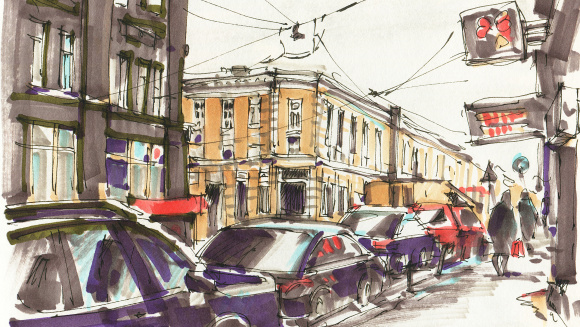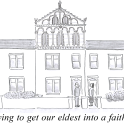A beginner’s guide to choosing a school in London

London is a huge, diverse, and fast-moving city. Its occupants live busy lives and demand high standards, not least from the educational establishments they choose for their children. Some of the country's most academic state and private schools are to be found in the capital, and excellent sport, art, drama, and music are also on offer if you know where to look.
'There is no sign of demand for school places in London slowing down,’ says Melanie Sanderson, managing editor of The Good Schools Guide. ‘The outstanding nature of the capital’s schools, from academic results to their co-curricular offerings – and not forgetting their globally recognized brand names – makes them magnetic to the global elite as well as local parents, and for the best schools, there are always many more applicants than there are places’.
So if you’ve got your heart set on educating your child in London, what do you need to know and how can you navigate the process?
Choosing a London state school
London's state primary schools routinely average better SATs scores than those in the rest of England; the same goes for GCSEs and A levels in state secondary schools and sixth forms. If you know that you are looking for a state-maintained rather than a private school, London is certainly a good place to be. The other side of the coin is that living in an area which would give you access to the best of these schools may come at a cost.
Living near a good state school
Catchment areas, according to a strict definition, aren't actually found in much of London. However, the distance you live from the school gates can be a deciding factor when it comes to a successful application. In areas with outstanding schools also densely populated by young families, you may need to live as close as 250 metres from the school gates to secure a primary place. The local authority website will publish a lot of information regarding school admissions – be sure to check admissions policies for schools you like (namely the oversubscription criteria and how the home-to-school gates distance is usually calculated; ‘as the crow flies’ is most common but occasionally using a walking route) and seek out information relating to the furthest distance a successful applicant was living from the school gates in previous years - often called ‘last pupil admitted’. This figure will provide a kind of de facto catchment area and is something you should bear in mind. If, for example, no one beyond 0.5km has been admitted to a particular school in recent years and you live 0.8km away, pinning your hopes on a place at that school may be a risky strategy. Click for a more detailed explanation of ‘last pupil admitted’.
In areas with outstanding schools also densely populated by young families, you may need to live as close as 250 metres from the school gates to secure a primary place.
Not surprisingly, over the years the areas in the immediate vicinity of high-achieving state primary schools have attracted ambitious parents, further improving standards at the school and forcing the house prices up, which in turn means that mainly well-off, middle-class families will be in a position to apply for places at that school in the future... and so on. It's because of this cycle that you can find two primary schools within 500 metres of each other; one may be entirely dominated by middle-class professional families while the other far more diverse and representative of the wider locale. Do your homework regarding admissions criteria and locations but be prepared to pay through the nose for your property if you want there to be no doubt regarding your child's admission to the area's most popular primary.
Grammar and partially selective schools
The same is true of London's best secondary schools, although of course they are bigger and don't admit pupils from such small, localised areas. Comprehensives are found across the capital but grammars and partially selective schools are also a feature of the educational landscape. Partially selective secondaries can be found in the boroughs of Barnet, Croydon and Wandsworth. These have a comprehensive intake but additionally offer a fixed percentage (between 10 and 25 per cent) of places to academic high achievers (as established during an assessment test). There are fully selective grammar schools in the London boroughs of Barnet, Bexley, Bromley, Enfield, Kingston-on-Thames, Redbridge, and Sutton, and a few outer boroughs may be close enough to grammars just outside London to make a successful application a possibility. Some of these top the national league tables and outperform many private schools, so be prepared to start tutoring your child from year 5 for them to have a chance of success in the famously cutthroat entrance exams. The same applies if you are considering using the state system for primary and moving to an academically selective private school later; you can find more information on tackling this in our article Combining state and private education in London.
Faith schools
The other critical factor in London state schools is one of faith. Unlike other parts of the country, practically all faith schools in London admit according to a faith-based criteria. The vast majority of these faith schools are Roman Catholic and Church of England, and they admit at least 50 per cent of pupils according to their parents' attendance at church. In many cases, particularly RC schools, 100 per cent of pupils come from families who have had to demonstrate their religious devotion to attain a place. Faith schools often get good grades, or in the case of faith primaries, they can ease passage into the faith secondary schools which get good grades, and so their places are in great demand. The result of this is packed Sunday services at the schools' associated churches and a rush to get children baptised. There is a supplementary form for faith school applications which, in addition, often require a letter from the priest or equivalent.
The only impartial guide to the South London educational landscape, with more than 100 school reviews and everything you need to know about the local school scene.
Choosing a London private school
Nowhere in the UK has as many private schools as London. There is a great array to cater for all abilities and interests. Pre-preps with nurseries take children at 3 (or even younger), with most then preparing pupils for competitive entrance exams for prep schools at 7+ or 8+. Many – especially those catering for boys – start in either year 3 or year 4 (many have intakes into both these year groups) and go up to year 8 to prepare pupils for Common Entrance, providing a springboard either to London day schools with a main intake in year 9 or boarding schools around the country. Girls usually leave prep/junior school at the end of year 6 to head to day school in year 7, and there is a growing trend for boys to do the same as more and more boys’ and coeducational schools increase their year 7 intake to allow for a healthy mix of applicants from both the state and private sectors.
Many London private schools still operate on single-sex basis although it is becoming slightly less common. In the last two decades, a number of all-boys' schools have become partially or fully co-ed (see Highgate, Latymer Upper, UCS) and it is a trend that is likely to continue: Westminster School plans to be fully mixed by 2030. There are still plenty of single-sex schools (more girls' schools than boys') although complete isolation of pupils from the opposite sex is no longer the done thing and they often collaborate with sister/brother schools for sporting, music, and drama events.
If your ambition is for your child to attend a top academic London day school, be sure to give thought to the route when they are very young. Some leading prep schools still require you to put your child’s name down at birth to be in with a chance of a place. However, don’t be taken in by the narrative that if you haven’t done this you have left it too late. This is definitely not the case for all schools and the transient nature of London means that occasional places do come up as families are relocated around the globe, so it’s always worth joining a waiting list on the off chance.
‘Remember that every school wants you to think it’s full,’ says Melanie Sanderson, managing editor of The Good Schools Guide. If you have your heart set on somewhere but are a bit late to the party, build a friendly rapport with the admissions office and stay in touch. Make it known that their school is your first choice and that you would definitely accept a place should one be offered.’
Private schools in London are in great demand
Despite the abundance of private secondary schools, these, like the best state schools, tend to be heavily oversubscribed. If your child is already in a prep school, the head teacher will give you clear guidance on where your son or daughter should aim for and, if they are doing their job well, will smooth their path to ensure entry. Notwithstanding that, those applying for London private schools often sit exams for upwards of three, sometimes five or more. Schools will cite terrifying statistics of five or more applicants for every place. Rest assured that this is somewhat misleading as each of those applicants can only accept one place and there is much shuffling of acceptances between offers in February and the start of term in September. Do be realistic about your child’s abilities, though. The Good Schools Guide Education Consultants recommend that you have one ambitious target, one realistic option, and a back-up in case your child underperforms on exam day.
If you need help choosing a school - whether private, grammar or state - our experienced consultants can provide expert support and advice.
Featured in: UK education advice







